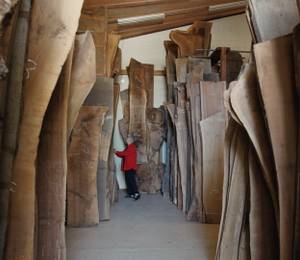Stonehill Taylor redesigns a New York icon, inspired by its literacy and theatrical past.
New York, USA – The 181-room Algonquin Hotel re-designed by Stonehill Taylor is one of the oldest operating hotels in New York City. Originally built in 1902 by architect Goldwin Starrett (whose architectural credits include famous flagship department stores like Lord& Taylor, Bloomingdale’s, Saks Fifth Avenue, and Abraham &Straus), the New York icon complements its Midtown block’s other famous landmarks, like the New York Yacht Club and Harvard Club. Named as an ode to the Indigenous tribe that once lived in North America, The Algonquin’s exterior is detailed with neo-Renaissance terra-cotta motifs on its brick and limestone facade.
Stonehill Taylor oversaw the interior design and interior architecture of the Beaux-Arts style hotel, including the redesign of the hotel’s famed Blue Bar and Oak Room, the latter of which was the setting for what became known as ‘The Round Table.’ The Round Table was an exclusive daily lunch meeting the hotel during the peak of the Roaring 20s,reserved for a group of distinguished writers, Broadway playwrights, poets, and musicians that jokingly called themselves ‘The Vicious Circle.’ Run by the hotel’s manager-turned-owner Frank Case, the Round Table made the hotel a popular rendezvous spot before Broadway performances, and later solidified the hotel as a historical landmark in 1987.
Due to its close proximity to the Great White Way, the once brand-new Grand Central Terminal, and the former Hippodrome, The Algonquin Hotel attracted many notable patrons: John & Ethel Barrymore, Florenz Ziegfeld, Orson Welles, and E.B. White were regulars. Prominent Round Table members also included Irving Berlin, Dorothy Parker, and Harold Ross. With his wife Jane Grant, Ross founded The New Yorker magazine at The Algonquin in 1925.
The Algonquin’s new interior design references the sophistication of this special period in New York City and the hotel’s history, with design motifs that pay homage to the literary and theatrical characters that once called the hotel their second home. Richly textured furniture, velvet drapery, theatrical lighting, and optical illusions in art pieces throughout the hotel are harmonized to give the hotel’s design its full effect. The rope design details found in the lobby and private dining area were inspired by the first ever use of velvet ropes at the hotel that kept fans of the Vicious Circle at bay-since a mainstay at NYC entertainment venues reserved to insiders.
















